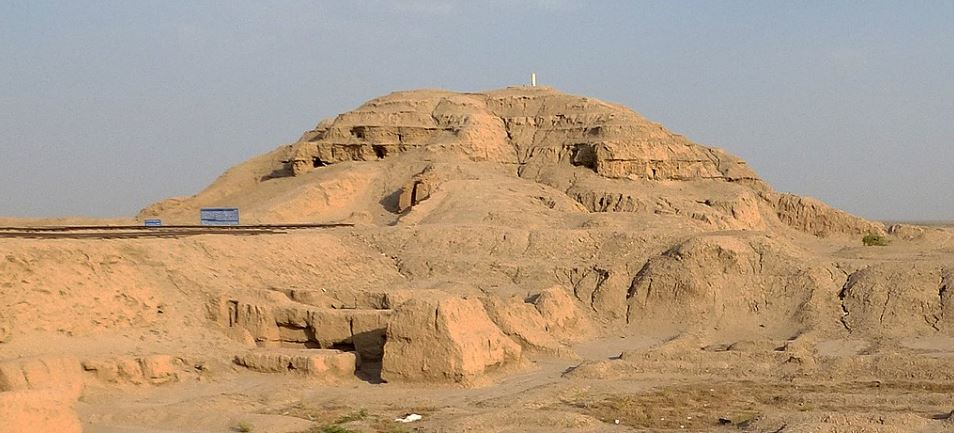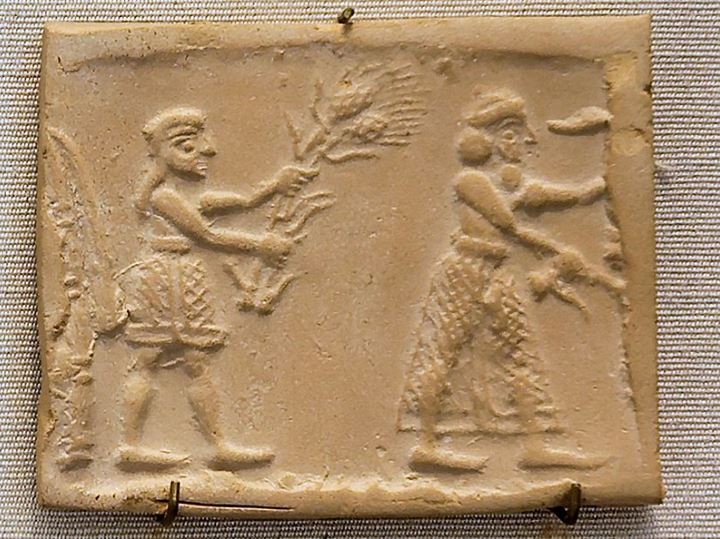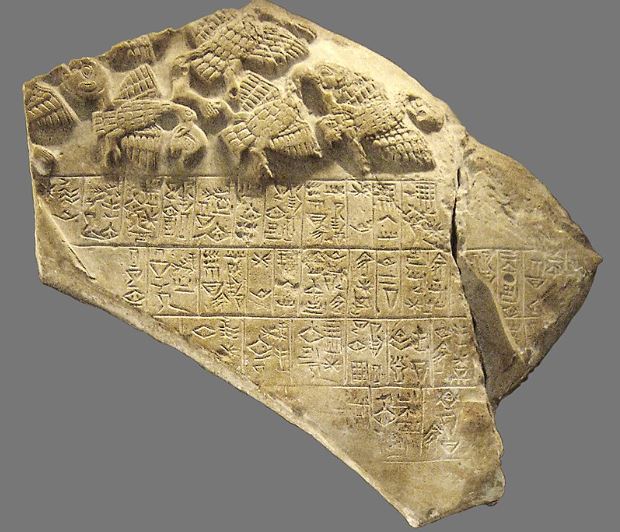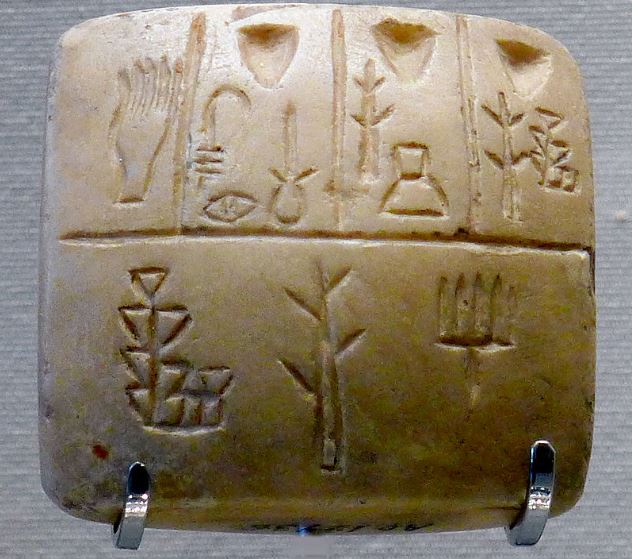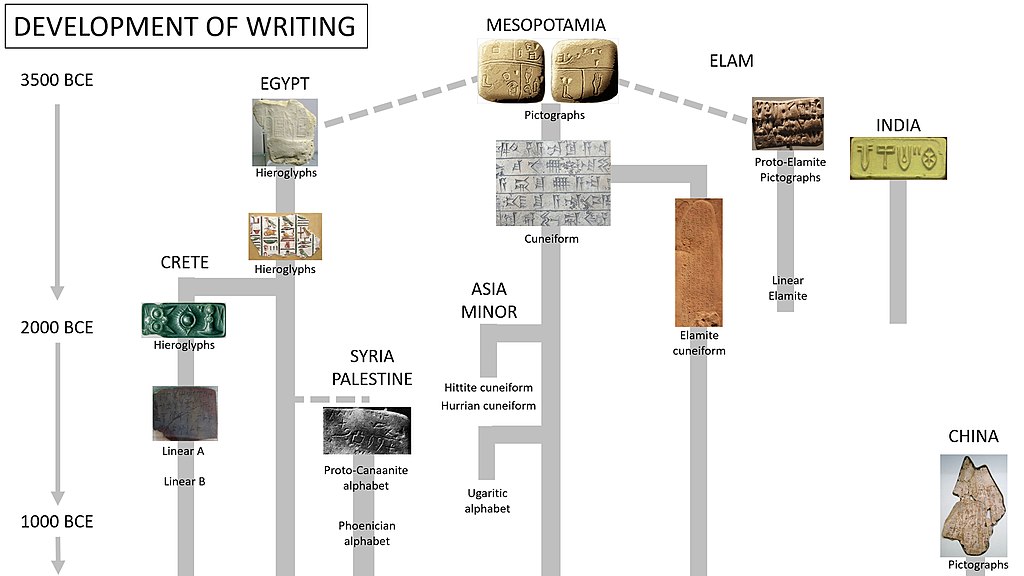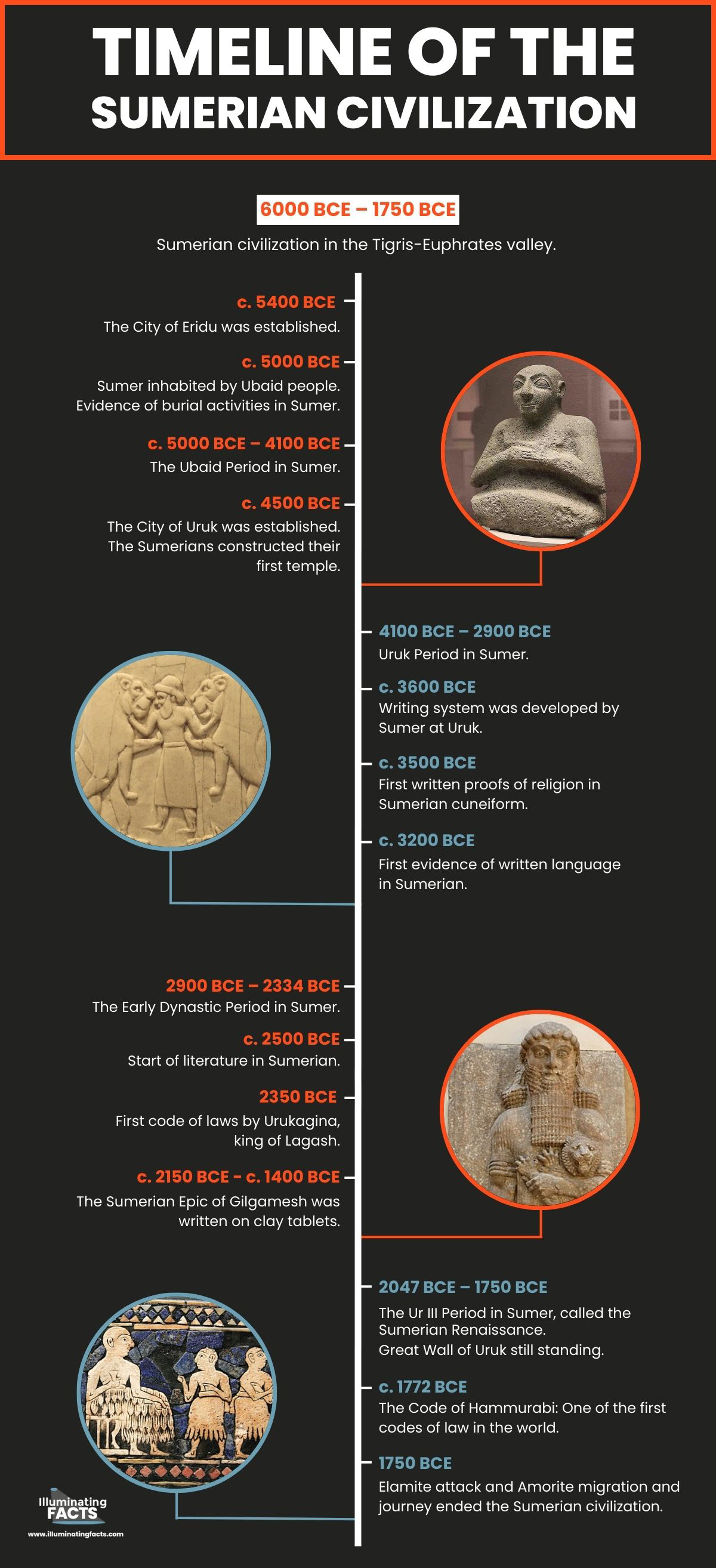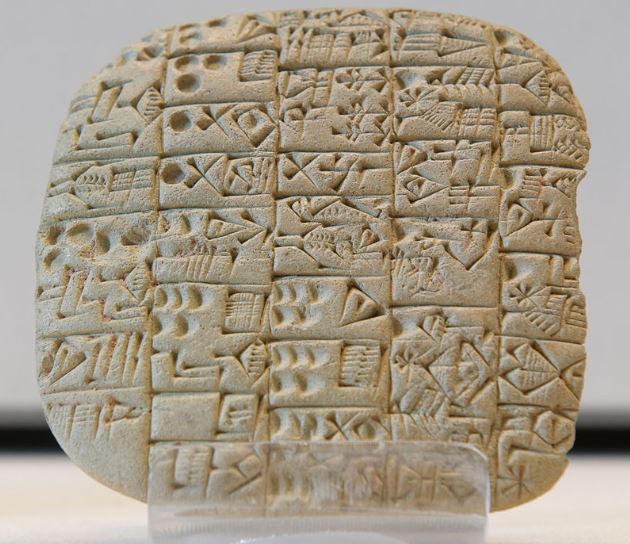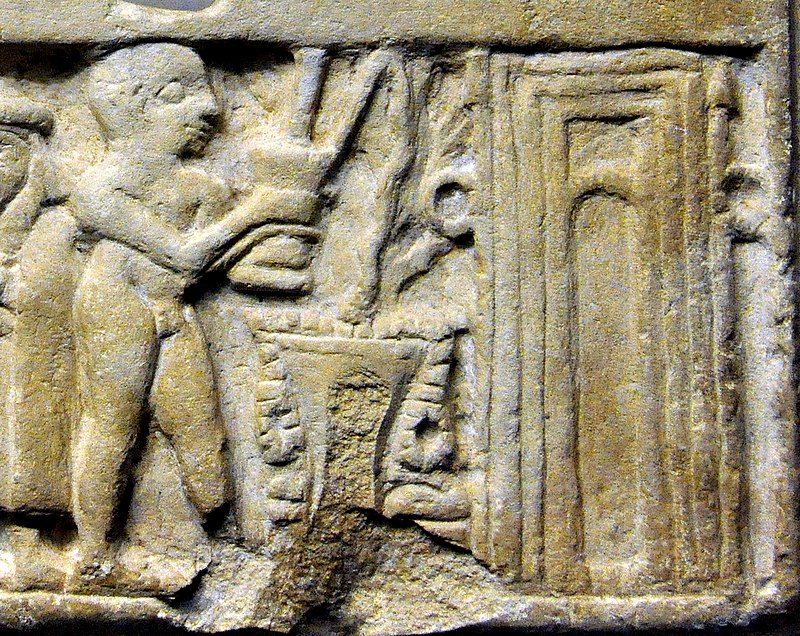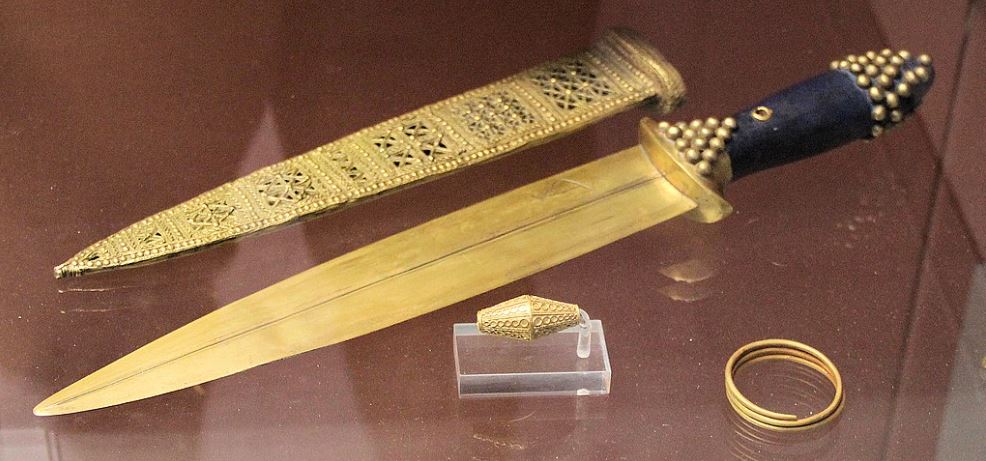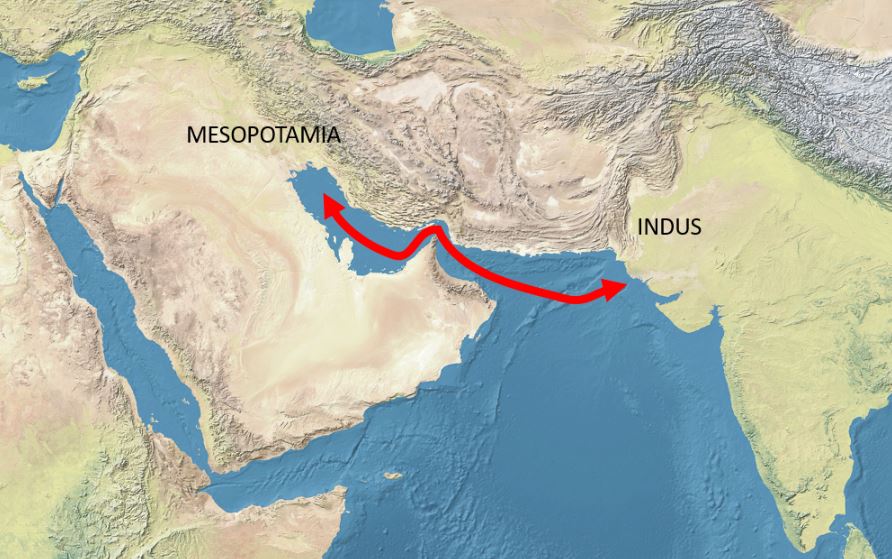Ancient Mesopotamia is said to be the cradle of civilization. Various empires were formed in this land. One of the civilizations that made an indelible mark in this territory was the Sumerians. This group of people had brought greatness to Mesopotamia.
With its king or governor, a semblance of government was invented in its city-states. In fact, the invention of government and laws is often linked to the Sumerians. They organized the city, built projects, and formed laws for the citizens to obey or face punishments. Other technologies credited to them included the invention of the wheel, irrigation system, sailboat, writing system, legal codes, plow, mathematics system, and many others.
Who were the Sumerians
The Sumerians were people who were known to have first formed the first human civilization in world history. They lived between the Tigris and Euphrates Rivers in the ancient Middle East.
Many scholars believed that the Mesopotamian cities and towns were built by the Sumerians about 5000 BC. Nomads found their way into the abundant land of ancient Mesopotamia, and organized some small villages which eventually became towns and cities, until it turned into the civilization of the Sumer. Eventually, the place is often referred to as the “Cradle of Civilization”.
As the small villages of the Sumerians slowly turned into large cities, they organized them into city-states. In this manner, a city government would manage the affairs of the city and rule the territories around them.
Interestingly, these city-states also fought each other. To protect their lands, they constructed walls and fortresses around their cities.
While the villages, farms and other agricultural areas were located outside the city walls, the residents would also retreat to the inner city when some other groups of people attacked them
There were many city-states formed throughout Sumer’s territories. The mighty city-states included Ur, Eridu, Shuruppak, Uruk, Sippar, and Bad-tibura. Historian considered these cities as the first major cities and one of the ancient cities in the world.
Origins
Historians have remained baffled about the origin of the Sumerians. Their roots have remained a mystery until today.
They referred themselves Saggiga (the “black-headed” or “bald-headed ones”) and their country, Kengi (“civilized land”).
Some scholars believed they originated around Anatolia or present-day Turkey.
Others said they might have traveled from India or were Caucasian in their roots. The Sumerians established their civilization in southern Babylonia, in what is modern-day Iraq.
The ancient Greeks named Mesopotamia, or “the land between the rivers,” as the collection of city-states or cities that were also independent nations. Some of these city-states endured for 3,000 years.
How did they rise as a civilization
The Sumerians were known for their government and rulers. The city-states had their own set of rulers.
These rules were called by different titles like en, lugal, or ensi.
The ruler was like a governor or a king. Often, the high priest was the ruler of the cities, holding much power over the people.
Gilgamesh, the most famous king of Uruk, became the center of the Epic of Gilgamesh, which is considered as one of the oldest pieces of literature that survived the times.
The Sumer also had a complex system of government. They have officials and workers who managed and organized the infrastructure works of the city. These officials helped keep the city running. They also crafted laws and implemented punishment measures for those who violated them.
The Sumerians started to construct walled cities, including Ur, the capital of the civilization. Each of these cities included markets, public buildings, advanced water systems, and workshops, among other structures.
Political power originally belonged to the citizens, but as rivalry between the various city-states increased, each adopted the institution of kingship.
Religion
In terms of religion, every city-state of the Sumerians had its own god. In the middle of each city, people can find a big temple called a ziggurat.
This enormous building was designed like a step pyramid, but with a flat top that served as an altar to their god. Here in this ziggurat, the priest made and performed their offerings, sacrifices, prayers, and rituals.
People in each city-state were believed to worship under the dominion of a local god or goddess. Because of these, temples became dominant structures in every city.
The Ziggurat of Ur became the famous structure. It was a three-storied, 15m (49 ft) high building made from mud bricks. It was designed like a pyramid with staircases or terraces.
Previous Ancient Origins writings mentioned the description of the famous Ziggurat of Ur with the following words:
“The Great Ziggurat of Ur was dedicated to the moon god Nanna, who was the patron deity of the city. As the Mesopotamian gods were commonly linked to the eastern mountains, the ziggurat may have functioned as a representation of their homes. Thus, the people of Ur believed that their ziggurat was the place on earth where Nanna chose to dwell […] The people of ancient Mesopotamia believed that their gods had needs just like their mortal subjects. Hence, a bedchamber was provided for Nanna in the shrine on top of his ziggurat. This chamber was occupied by a maiden chosen to be the god’s companion. On the side stairway of the ziggurat’s north western part is a kitchen, which was likely used to prepare food for this god. The god’s mortal servants had to be provided for as well, and the outer enclosure of the ziggurat contained a temple storehouse, the houses of the priests and a royal ceremonial palace.”
Some important inventions and technology of the Sumerians
The many inventions that came out from the Sumerian people have remained useful until today.
The Sumerians invented and developed sun-dried bricks, the first form of writing, irrigation for farming, a number system, the first wheeled vehicles, sun-dried bricks, and irrigation for farming.
In the field of science, they also showed particular interest in astronomy, on the movements of the stars and of the moon. The information they had in doing this was used in making a more accurate or correct calendar.
Because the Sumerians established their cities in desert areas, they invented several technologies to make them into an “oasis.” The simple plow is considered one of the useful innovations introduced by the Sumerians.
The earlier form of plow came about 3500 B.C. And by 1500 B.C., the Sumerians had also made a seeder plow, which allowed farmers to utilize animals or the beast of burden to till the land and plant simultaneously.
The devices also had instructions, as shown in Sumerian Farmer’s Almanac, which guided farmers on how to increase their crop yields courtesy of irrigation and tilling.
All the inventions and technologies introduced by them helped support a thriving population. It also boosted the capabilities of the rulers and their religion.
As the city-states rapidly thrived, their initiatives in math, religion and writing also flourished.
As back as 5,000 years ago, the Sumerians had introduced cuneiform, one of the earliest forms of writing.
It recorded the business, commerce, movement of goods, teachings, gods, cooking tips, Sumerian history, and even pornography on stone and clay.
In facts, there are still thousands of Sumerian tablets found in museums across the world that need to be translated and awaiting discovery of its content.
The Sumerians were also responsible in the development of wheeled chariots, the 60-minute hour, and The Epic of Gilgamesh.
Archeologists discovered these proto-cuneiform tablets in the Sumerian city of Uruk.
At Eridu and elsewhere in Sumer territories, a cuneiform telling flood story that resembled one that was written in Bible’s Old Testament was also found. Biblical historians named it “The Eridu Genesis” story.
As written on the tablets, scholars said it talked about the gods who first relayed to humans to take up living in cities in Sumer. However, the gods decided to annihilate the human race with a great flood. As the myth said, one specific god named Enki relayed to a Sumerian king named Ziusudra that he should construct a ship to save the people in his territory.
Why did they rise
As the first known people to settle in southern Mesopotamia, the Sumerian took advantage of the Tigris and Euphrates rivers.
Their establishment in the said region resulted in the coining of the term “cradle of civilization.”
Despite the arid and ancient landscapes of the old Middle East, the Sumerians saw the location for massive agricultural breakthroughs and advantages.
By establishing their settlements between two large rivers, the Sumerians gained more from the rich floodplain soil and sufficient water to irrigate their plants.
Their success was accelerated by Sumerian technological instruments like canals and plows.
With time, the Sumerians had an abundant source of food, and their crops went well. This opportunity gave them enough time and resources to also focus on establishing temples and cities.
By the 4th millennium BC, the Sumerians created an advanced system of writing, fascinating architecture and arts, mathematics, and mathematics.
When the Akkadians followed the Sumerians in Mesopotamia, they also borrowed some knowledge of their culture, and came up with a new language of their own.
How long and how far did they rule
As pioneers of urban civilization, the Sumerians dominated the southern parts of Mesopotamia in the 4th and 3rd millennia BC.
In one of its most sprawling and oldest city of Uruk alone, it has a bustling hub for commerce that covers six miles of defensive walls and a population of between 40,000 and 80,000. It was said to be the largest city in the world at its peak around 2800 B.C.
The development of irrigation, cultivation of cereals–even in desert areas, the formation of simplified cuneiform writings in wet clay, and the construction of enormous cities and temples made their rule in the Mesopotamia region extremely significant and advantageous.
When did they fall
The constant disagreement and conflict between the city-states and the threat of attack from the north resulted to the downfall of the Sumerians.
About 2340 BC, Semitic people known as Akkadians in the north overpowered the Sumerian city-states and took the population one control. The invasion brought the rise of Akkadian Empire, which ruled the Sumerian people.
The Akkadian was founded by Sargon the Great. He also established a group of city-states under the rule of Sargon’s city, Akkad.
Sargon dominated the land from approximately 2334-2279 BC and invaded the entire southern Mesopotamia as well as areas of Syria, Anatolia, and Elam (now western Iran). He established the first Semitic Dynasty in the region.
The rule of Sargon was also known from various legends that followed his reputation for some 2,000 years of Mesopotamian history.
However, not many records were written during his lifetime. This absence of contemporary record was explained by the basis that the capital city of Akkad has never been excavated or located. The Akkad city was destroyed in the last term of the dynasty that Sargon established. The city was never inhabited by other groups again.
In the end, the Akkadian Empire did not also last long. They were overrun by raids and attacks from neighboring hill peoples by 2100 BC.
These mountain people, called Gutians, conquered many parts of Sumer.
This made the Sumerian civilization also collapsed. It wasn’t until 1792 BC that a new ruler came to take hold of much of Mesopotamia. The Babylonians, led by their king Hammurabi, took power of the territories once owned by the Sumerians.
Ancient Sumerian poems Laments for Ur 1 and II captured the story of the destruction of the cities of Sumerian people. The poems were written on clay tablets in cuneiform script [1].
The destruction of the ecology also contributed to the fall of Sumerian civilization [2].
Scholars and researchers wrote about how the neglect of the irrigation system that required regular and systematic cleanup also contributed to the change of the course of the Euphrates river. The blocking or cutting off the supply of water to Sumerian cities by other rival groups also brought irreversible changes to the lives of the people.
While the documentation of this situation was “fragmentary,” many historians believed that the deprivation of water to the inhabitants caused them to leave their cities in a hurry.
Relocation of people also took place and were recorded by historians.
The ruling of the Babylonian state also gave some glimpses on the systematic relocation of the population.
For instance, the refugees from Uruk were moved to Kish, from Larsa to Babylon, and from Isin to Sippar.
While the immigrants from the Sumerian cities continued with their identities, they were soon assimilated by the Babylonian population.
When the kings of the Kassite dynasty invaded the Sealand–a big portion of southern Mesopotamia that was incorporated into a state,
and ordered partial restoration of the irrigation network in the territory of former Sumer, the bedrock of the Sumerian civilization, just like the Sumerian language, became dead for at least a few generations.
Whether the change in the flow of the Euphrates River was intentional, accidental or a natural disaster, it was seen as the most crucial factor in the dividing line in the history of southern Mesopotamia.
The changes in the river course brought significant impact to the political, social, and economic situation of the Sumerians.
Ironically, the mother river that helped Sumerians to establish their civilization also became the reason for its rapid demise. The Sumerian civilization collapsed in about 1739 BC
Sumerian Civilization by the Numbers
Number of separate city-states in Sumer [3]:
12
Number of pictographs which over time evolved into cuneiform script [4]:
Over 500
Number of people living in the city of Urul by c. 2900 BC:
Between 50-80,000 people
Estimated number of clay tablets from the Sumerian civilization unearthed in ancient Mesopotamia [5]:
Over 10,000 clay tablets
Length of where cuneiform (the ancient Sumer writing system) was used [6]:
More than 3000 years
Timeline of the Sumerian civilization [7]:
Most interesting facts about the Sumerians
1. The Sumerian city-states were regularly at war with each other.
Despite having common cultural background and language, the Sumerian city-states often see themselves engaging in battles in several various kingships and dynasties.
The earliest of these wars known to history involved King Eannatum of Lagash, who overran the rival city-state of Umma in a territory dispute sometime in about 2450 B.C.
To celebrate his conquest, Eannatum built the known “Stele of the Vultures,” a monument that showed birds devouring on the flesh of his defeated rivals. Eannatum of Lagash also conquered the rest of Sumer. However, the fall of Umma was just one of several city-states that were conquered over Mesopotamia in its history.
As the rival wars intensified, several rulers had thought of various military advancements in their attacks. The development of siege warfare and phalanx formation techniques.
On the other hand, they also became vulnerable to attacks from foreign invaders, such as Elamites, Akkadians and Gutians.
2. The Sumerians were fond of drinking beer.
Brewing also found popularity among the Sumerian people. A clay seal showing beer drinking in a banquet was recoded, dating from 2600-2350 B.C.
Aside from law codes, plow, literature, and writing, the Sumerians were noted for beer-drinking tradition.
While the invention of brewing methods remained a mystery, the Sumerians were known to have their drinks consumed in a particular type of filtration straw.
The Sumerians loved their beer for its ingredients and celebrated it as something that brought them a “joyful heart and a contented liver.”
A Sumerian goddess of brewing named “Ninkasi” was also worshipped by the people. They celebrated this particular goddess in a popular song as the “one who waters the malt set on the ground.”
3. The Sumerian civilization adopted cuneiform writing for over 3,000 years.
The Sumerian discovery of cuneiform–a Latin word literally meaning “wedge-shaped”–was dated to sometime in about 3400 B.C.
In its most sophisticated format, the cuneiform was composed of several hundred characters that ancient writers used to scribe syllables or words on wet clay tablets. They used a reed stylus to scribble them.
The tablets were then left to dry in the sun.
Historians said the Sumerians must have invented the cuneiform for simple tasks such as recording business dealings, accounts, and transactions.
Overtime, the form of writing because a full-fledged system to record their laws, literature, and other historical facts.
The cuneiform also went with multiple languages throughout several millennia by several other groups of people and cultures.
Historians and scholars even found proof that Near East astronomical writings were still being recorded using the cuneiform up to the first century A.D.
4. Sumerian rulers include one woman in the list.
Kubaba was the only female ruler that was listed on the so-called “King List”. This list that was found on a clay tablet became one of the primary sources of information on the old Mesopotamia.
The list documented the rulers and the duration of their reigns.
The record also contained an uncanny combination of myth and historical facts. One particular myth included one old king that said to have lived for 43,200 years!
For Kubaba, or “woman tavern-keeper,” she supposedly took the throne in the city-state of Kish about 2500 B.C.
There were few details available on the duration of her reign and the origin of her rule. However, the said “King List” talked about her contributions to bringing “firm the foundations of Kish” and building a dynasty that lasted 100 years.
5. The Sumerians were well-traveled trade merchants.
Since the territories of Sumerians were largely devoid of trees, minerals, and stones, they were forced to make one of history’s earliest commerce, which was done both by sea and land.
Their most important trading partner may have been the island of Dilmun, modern-day Bahrain.
Dilmun was known to have monopolized the trading of copper. The traders in this place also journeyed in months to Lebanon and Anatolia to get cedar wood. They also traveled to Oman and the Indus Valley to gather gemstones and gold.
The Sumerians enjoyed the use of lapis lazuli, a blue-colored precious gem used in jewelry and art.
They have gathered these stones as far as Afghanistan. Scholars believed Sumerian references to two ancient trading places as “Magan”, or Egypt and “Meluhha”, or Ethiopia.
6. Sumerians used chariots
Sumerians were credited with the military application of the wheel. This was depicted on the stele and showed Eannatum riding in a chariot.
The Sumerian invention of the chariot became one of the major military innovations in mankind’s history.
7. The hero of the Epic of Gilgamesh was probably an actual person in Sumeria.
The “Epic of Gilgamesh” was known as one of the crowning feats of the Sumerian people in Mesopotamian. This 3,000-line poem talked about the journeys of a Sumerian king as he fought the monster and worked on experiencing the secret of eternal life.
While the hero in this literature was a demigod with power like Hercules, many historians believed that he was based on the real fifth king who ruled the city of Uruk.
The Gilgamesh was written on the Sumerian “King List”. He was believed have ruled and lived sometime about 2700 B.C.
However, only small contemporary stories of his dominion have survived in the current times.
Yet archeologists maintained they had located some inscriptions that credit the literature’s hero with constructing Uruk’s giant walls and rebuilding a temple to the goddess Ninhil. This account suggested that he may have been a real king whose feats were narrated through a myth.
8. Today’s people still use the Mathematics and measurements invented by Sumerians.
The origins of the sixty-second minute and sixty-minute hour found the roots to ancient Mesopotamia.
The Sumerians also utilized a sexigesimal structure that was based around groupings of 60.
This divisible number system was also used by the Babylonians, who utilized it for astronomical measurements of the months and year lengths.
The use spatial measurements, like the 12 inches foot and 360 degrees also found their origins to the Sumerian mathematical system.
9. Sumerian culture had vanished until about 19th century.
The invasion of the Amorites and Babylonians in the early second millennium B.C. brought demise to the Sumerians’ cultural identity.
The occupation forced them to cease the use of their political power and control.
Eventually, their language, history, technologies, and name were lost.
British and French archeologists only discovered their secrets deep in the deserts of Iraq until the 19th century.
The researchers stumbled upon Sumerian artifacts while looking for evidence of the ancient Assyrians.
Known historians, like, Edward Hincks, Julius Oppert, Henry Rawlinson, and Paul Haupt took the initiative in deciphering the cuneiform and Sumerian language. The discovery gave an initial idea of the long-lost records of the earliest population in Mesopotamia.
As this developed, many archaeologists have discovered numerous artifacts of Sumerian pottery, art, and sculpture. Also, about 500,000 clay tablets have remained to be translated [8].
10. Some scholars believed that the ziggurat at the city of Eridu was the Tower of Babel from the Bible.
Historians also thought of the building of ziggurat at the city of Eridu as the famous Tower of Babel that was written in the Bible. On the other hand, some city-states in Sumer were quite enormous. The city of Ur was seen to have been the biggest and may have had a population of 65,000 people at its peak.
11. The Sumerian language was eventually replaced by the Akkadian.
The invasion of Akkadian in Mesopotamia did not only result in the loss of the Sumerian territories but also of their language at around 2500 BC.
12. The Sumerian buildings and houses were made from sun-dried bricks.
Since ancient Mesopotamia was mainly desert, the Sumerians constructed their buildings and homes using sun-dried bricks. The abundance of this technology was also seen in other structures like the ziggurat and other infrastructures in the cities [9].
13. In modern times, many people continue to be fascinated by Sumerian civilization.
Many people have been fascinated by the Sumerian civilization, from ancient alien conspiracy theorists to other literature like the great deluge.
While Babylonian and Assyrian empires later dominated the lands of the Sumer, their language and religious rituals dominated for millennia.
Some excavations of Babylonian homes showed uncovered tablets containing writings of Sumerian language from long after the civilization itself vanished.
14. Babylonians learned much of Astronomy from the Sumerians.
The Babylonians, who invented the first star maps, seemed to have learned a lot of their information of astronomy from the Sumerians.
The Babylonian race used two types of constellations — one for checking farming schedules and another to worship the gods.
The latter was handed down to the next civilization, courtesy of the Greeks Empire, and made the basis for the 12 zodiac constellations. Also, the name of the stars used to date back to the Sumerian people. This showed that the ancient Sumerian people were keen on studying science and astronomy more than maintaining their existence in Mesopotamia [10].
Conclusion
While the Sumerians may have vanished thousands of years ago, the impact of their culture and technologies have continued to intrigue and influence present-day civilization. Indeed, the people today have been shaped in various ways from the lives and lessons of the old cultures and societies like that of the Sumerian people.
References:
[1] History Wiz.com. The Destruction of Sumerians. Retrieved September 16, 2022, from https://www.historywiz.com/exhibits/destructionofsumer.html
[2] Archeowiesci.pl. Chyla, J. (2021, October 25). Retrieved September 17, 2022, from https://archeowiesci.pl/en/1739-bc-year-when-the-sumerian-civilization-collapsed/
[3] Britannica.com. Sumer (2022, August 26). Retrieved September 18, 2022, from https://www.britannica.com/topic/Ningishzida
[4] The School Run.com. Ancient Sumer and Mesopotamia. Retrieved September 18, 2022, from https://www.theschoolrun.com/homework-help/ancient-sumer-and-mesopotamia
[5] US History.org. Life in Sumer. Retrieved September 20, 2022, from https://www.ushistory.org/civ/4a.asp
[6] Twinkl.com. Top 10 Ancient Sumer and Mesopotamia Facts for Kids (2020, December 8). Retrieved September 19, 2022, from
https://www.twinkl.com.ph/homework-help/history-homework-help/the-ancient-sumer-and-mesopotamia-facts-for-kids/top-10-ancient-sumer-and-mesopotamia-facts-for-kids
[7] World History.org. Sumerian Timeline. Retrieved September 14, 2022, from https://www.worldhistory.org/timeline/Sumerians/
[8] History.com. Andrew, E. (2019, February 5). Things You May Not Know About the Ancient Sumerians. Retrieved September 14, 2022, from https://www.history.com/news/9-things-you-may-not-know-about-the-ancient-sumerians
[9] Duckster.com. Ancient Mesopotamia: Sumer. Retrieved September 21, 2022, from https://www.ducksters.com/history/mesopotamia/ancient_sumer.php#:~:text=One%20of%20the%20great%20contributions,the%20development%20of%20human%20civilization.
[10] Discovery Magazine.com. Betz, E. (2020, November 10). Who were the Ancient Sumerians? Retrieved September 20, 2022, from https://www.discovermagazine.com/planet-earth/who-were-the-ancient-sumerians-and-what-are-they-known-for


